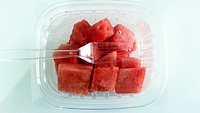Researchers Develop Model to Estimate Economic Value of Foodborne Illness Outbreak Investigations, Recalls

Credit: Shutterbug75 via Pixabay
Recently, researchers from the U.S. Department of Agriculture’s Economic Research Service (USDA’s ERS) and the U.S. Centers for Disease Control and Prevention (CDC), in collaboration with Iowa public health officials, developed a methodology that can be used to assess the value of state and federal foodborne illness outbreak investigations and subsequent recalls. The researchers demonstrated their model as replicable by employing it in a recent study that aimed to quantify the effect of public health actions of a 2018 foodborne Salmonella outbreak linked to prepackaged chicken salad.
Using their model, the researchers estimated that rapid response to the multistate foodborne outbreak of Salmonella Typhimurium potentially avoided 94 reported cases and saved approximately $921,000 in medical costs and productivity losses. ERS has provided a visual chart depicting the modeling steps applied to the S. Typhimurium outbreak.
The outbreak investigation began on February 5, 2018. Through whole genome sequencing (WGS) and serotyping analyses, epidemiological interviews, and food sample testing, the Foodborne Rapid Response team of the Iowa Department of Public Health (IDPH) was able to identify the source of the outbreak as prepackaged chicken salad sold at a specific grocery store chain in the U.S. Midwest. On February 9, the grocery store chain voluntarily removed the product from all of its Iowa stores, and on February 13, IDPH and the Iowa Department of Inspections and Appeals (DIA) issued a joint consumer advisory notification warning customers about the food safety incident.
Relevant federal and state data collected during the outbreak revealed that the grocery chain recalled 20,630 pounds of the contaminated chicken salad and successfully recovered 5,397 pounds (about 26 percent); based on a set of research-informed assumptions on food loss, ERS estimated that approximately 88.5 percent (13,481 pounds) of the unrecovered chicken salad was consumed. The study’s researchers used CDC information on state surveillance data to estimate the proportion of reported to unreported salmonellosis cases, which enabled the researchers to calculate that approximately 2,751 cases of salmonellosis were prevented by the outbreak investigation and recall. Finally, based on ERS estimates for the cost-per-case of foodborne salmonellosis, researchers calculated that the investigation and recall saved approximately $921,000 (the middle of the estimated range of $633,181–$1,013,196) in medical care costs and lost time at work.
Looking for a reprint of this article?
From high-res PDFs to custom plaques, order your copy today!






